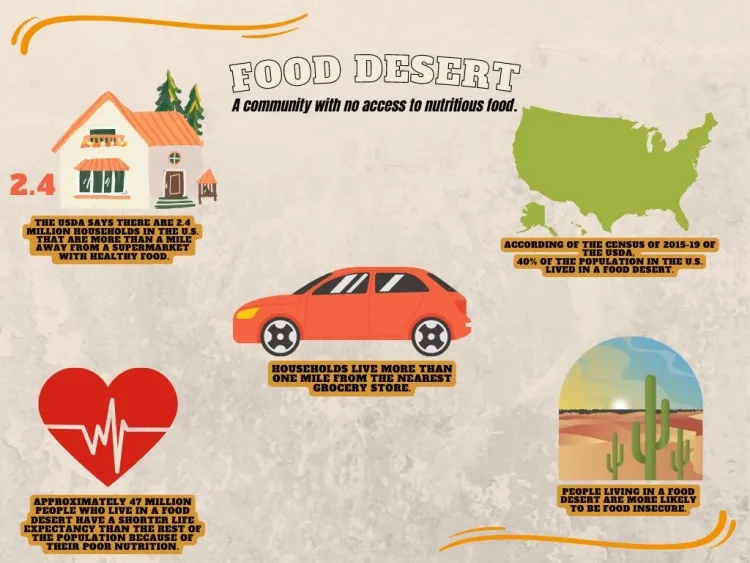Food Deserts and Their Implications...!!!
Food deserts are a complex issue with significant implications for public health and well-being. Addressing these challenges requires a multifaceted approach that includes economic, geographic, and policy solutions. By working together, communities can create environments where everyone has access to nutritious and flavorful food.

Food deserts are regions where residents have limited access to affordable and nutritious food. These areas often lack supermarkets or grocery stores that offer healthy food options, compelling people to rely on convenience stores or fast-food restaurants. This situation can lead to increased rates of diet-related health issues such as obesity, diabetes, and cardiovascular diseases.
Causes of Food Deserts
Several factors contribute to the existence of food deserts, including:
-
Economic Factors: Low-income communities often lack the financial resources needed to attract and sustain large grocery stores.
-
Geographic Factors: Rural areas and certain urban neighborhoods may be situated far from supermarkets, making it difficult for residents to access fresh food.
-
Transportation Issues: Limited access to reliable transportation can hinder people from reaching stores that sell healthy food.
-
Policy and Systemic Racism: Historical and systemic inequalities can result in the concentration of food deserts in marginalized communities.

Impact on Health
Living in a food desert can have serious health consequences. Without access to nutritious food, residents may consume more processed and high-calorie foods, leading to poor health outcomes. This can result in higher rates of chronic diseases and a lower overall quality of life.
Solutions to Address Food Deserts
Efforts to combat food deserts include:
-
Community Gardens: Encouraging the creation of community gardens to provide fresh produce.
-
Mobile Markets: Utilizing mobile markets to bring healthy food to underserved areas.
-
Policy Changes: Implementing policies that incentivize grocery stores to open in food deserts.
-
Education and Awareness: Educating residents about healthy eating and providing resources to help them make better food choices.
Flavors in Food Deserts
Despite the challenges, food deserts can still offer a variety of flavors and culinary experiences. Traditional foods and recipes often play a significant role in these communities, preserving cultural heritage and providing comfort. For example, in some areas, residents may rely on traditional dishes made with locally available ingredients, such as hearty stews, casseroles, and soul food.
Food deserts are a complex issue with significant implications for public health and well-being. Addressing these challenges requires a multifaceted approach that includes economic, geographic, and policy solutions. By working together, communities can create environments where everyone has access to nutritious and flavorful food.
What's Your Reaction?

















